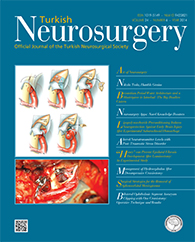MATERIAL and METHODS: A validated 3-dimensional asymmetrical finite element model of lumbar L1-L5 was developed based on computerized tomography (CT) scans. All components were assigned material properties mimicking original spinal components. Graded facetectomy was performed by removing facet elements along with surrounding capsular ligaments.
RESULTS: All three planes of motion were simulated and resulting range of motion at the index level, L4-L5, was compared with the intact model. Left unilateral facetectomy caused increase in range of motion by 14.6%, 87.4%, 94.5%, 10.5%, 6.3% and 8.8% for flexion, extension, left and right axial rotation, and left and right lateral bending, respectively. Total bilateral facetectomy resulted in an increase in motion by 33.6%, 238.7%, 120.4, 151.3%, 15.6% and 12.4% for flexion, extension, left and right axial rotation, and left and right lateral bending, respectively.
CONCLUSION: Extension and axial rotation were found to be affected by the facet removal whereas flexion and lateral bending were mildly affected.
Keywords : Facetectomy, Lumbar spine, Finite element model




